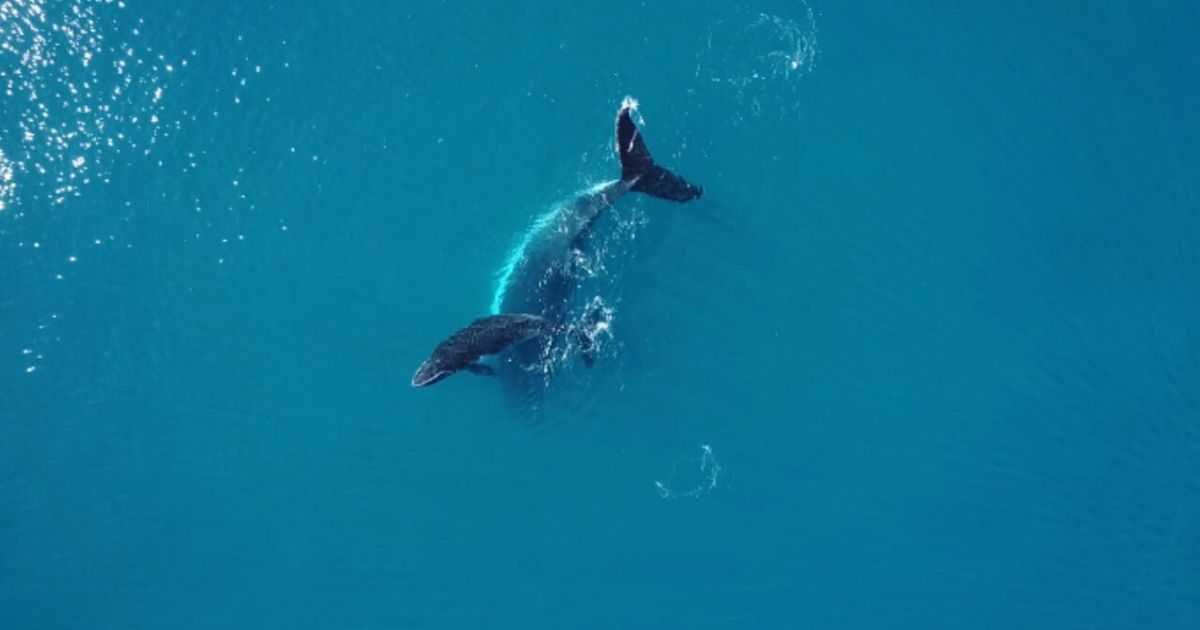We need new guidelines to shield whales from human-made noise to ensure them some peace and quiet. It is no good keeping whale-watching boats out of whales' sight if the noise from the boats' engines disturb the whales most. And whales can hear the boats' engines from far away, according to a Danish-Australian research team.
Whale-watching has become a multi-billion-dollar business, and companies want to give passengers the best possible experience by positioning their boats close to the whales.
Public authorities around the globe have set restrictions on whale-watching boats in order to protect whales. For example, some countries require boats to keep a distance of at least 100 meters from the whales or require them to stay behind or next to the whales at slow speed. However, scientific studies have shown that even when boats keep to these restrictions, the whales are still disturbed and change behaviour:
They dive, change course, swim faster, breathe more often, disperse and may make different sounds compared to usual.
Now, a team of researchers from Aarhus University in Denmark believe they have found an explanation: The engines in some of the boats are too loud. And authorities can now place noise emission standards on this noise.
"Unlike humans, the dominant sense in whales is not sight -- it is hearing. As such, a whale may not be able to see a whale-watch boat at 100 meter distance, but they are likely to hear it, so it makes sense to consider this when stipulating whale-watching guidelines," says Australian Kate R. Sprogis, biologist and Marie Skłowdowska-Curie Fellow at Aarhus University.
Kate R. Sprogis is the lead of a team of researchers who, using underwater speakers and drone cameras, have experimented to find out how much noise from boats it takes for humpback whales to change their behaviour. The results have been published in the scientific journal eLife.
The experiments were carried out in Exmouth Gulf on the west coast of Australia, which has the largest population of humpback whales in the world. Exmouth Gulf is a resting area where the whales rely on their fat deposits during winter as they are not feeding, and where their calves suckle to become strong enough for the migration to the feeding ground in colder waters during summer.
Using a drone, the researchers would search for a mother and her calf, and drive their boat to a 100 meters distance from them in a whale-watching scenario whilst emitting boat-engine noises at different noise levels. They completed a total of 42 controlled exposure experiments of this type and recorded all behavioural movements of the whales from the aerial perspective with the drone's camera.
At the highest boat-noise level of 172 decibels (a loud boat), at a 100 meters distance to the whales, they found that the resting time of whale mothers dropped by 30%, their breathing rate doubled and their swimming speed rose by 37%.
However, they often returned to a state of resting when the boat noise moved further away. Despite this, other research shows that repeated disturbance from humans can have long-term consequences for the whales: When whale mothers spend a great deal of energy negatively responding to underwater noise, they have less energy to feed their offspring, avert predators and unwanted males, and to migrate to their polar feeding ground to fatten up.
"For the calves, multiple disturbances can also mean that they don't get enough milk: In a short time, they have to grow big and strong enough to be able to cope with the migration to colder regions and to minimize the risk of being predated upon by sharks and killer whales," explains Kate R. Sprogis.
The researchers concluded that the noise level from a boat's engine should stay below 150 decibels (or, more specifically, 150 dB re 1 μPa RMS) to avoid impacting the humpback whales' behaviour.
Now, the researchers recommend introducing this noise emission standard, to ensure that loud boats are not disturbing whales unnecessarily.
They note that a number of whale-watching boats are already quiet and therefore comply with the recommendation. You can see a humpback mother and calf responding to different levels of noise in the video below.
Related Multimedia:
Journal Reference: Kate R Sprogis, Simone Videsen, Peter T Madsen. Vessel noise levels drive behavioural responses of humpback whales with implications for whale-watching. eLife, 2020; 9 DOI: 10.7554/eLife.56760
Story by Aarhus University





